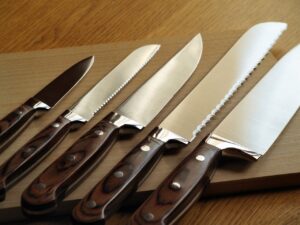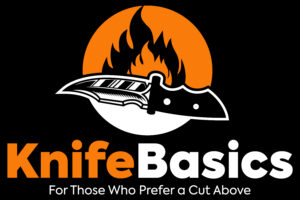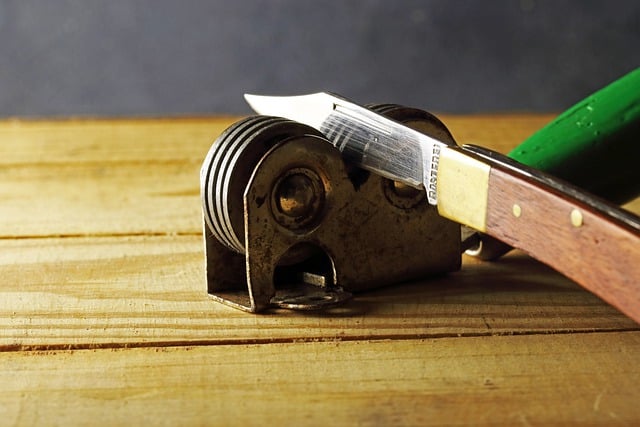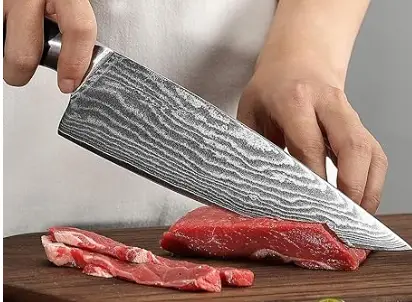Welcome to the world of stainless steel knife making, where science and art come together to create cutting-edge excellence. In this article, we will delve into the fascinating process behind the creation of these exceptional tools.
At the heart of stainless steel knife making lies a delicate balance between technical precision and skilled craftsmanship. Each knife is carefully designed and crafted to achieve the perfect blend of sharpness, durability, and elegance.
With the right combination of carbon, chromium, and other elements, stainless steel blades are created to withstand corrosion and offer superior performance. These knives become trusted companions in the kitchen, beloved by professional chefs and home cooks alike.
But it’s not just the science that makes stainless steel knife making remarkable. It’s the artistry involved in shaping the blade, creating intricate patterns, and crafting ergonomic handles that truly sets these knives apart. Each blade tells a story, reflecting the skill and dedication of the knife maker.
So, whether you are a culinary enthusiast or simply appreciate the beauty of a well-crafted tool, join us as we explore the captivating world of stainless steel knife making.
The science behind stainless steel
Stainless steel is a remarkable material that has revolutionized the world of knife making. It is an alloy composed primarily of iron, carbon, and chromium, with small amounts of other elements such as molybdenum, vanadium, and nickel. This unique combination of elements gives stainless steel its impressive properties.
One of the key characteristics of stainless steel is its resistance to corrosion. The chromium content in stainless steel forms a protective layer on the surface, preventing the formation of rust or stains. This makes stainless steel knives highly durable and long-lasting, even when exposed to moisture and acidic ingredients.
In addition to corrosion resistance, stainless steel also offers excellent strength and hardness. By carefully controlling the amount of carbon and other elements in the alloy, knife makers can create blades that are hard enough to maintain a sharp edge, yet not too brittle to withstand the rigors of everyday use.
The science of stainless steel knife making goes beyond just the composition of the alloy. Heat treatment is another critical aspect of the process. Through precise heating and cooling techniques, the knife maker can optimize the hardness, toughness, and overall performance of the blade. This ensures that the knife will retain its sharpness and functionality for a prolonged period.
Properties of stainless steel that make it ideal for knife making
While science lays the foundation for stainless steel knife making, it is the artistry involved that elevates these tools to a whole new level. Knife makers are not merely technicians; they are artists who bring their unique vision and creativity to each knife they create.
One of the most visually striking aspects of stainless steel knife making is the creation of intricate patterns on the blade. This technique, known as Damascus or pattern welding, involves layering different types of steel together and then etching the surface to reveal a beautiful pattern. Each pattern is unique, like a fingerprint, making every knife a one-of-a-kind masterpiece.
Crafting the handle is another area where artistry shines through. Knife makers carefully select materials such as wood, bone, or synthetic composites to create handles that are not only aesthetically pleasing but also comfortable to hold. The shape, texture, and balance of the handle are meticulously designed to ensure a secure grip and effortless maneuverability.
The art of stainless steel knife making
Stainless steel knife making has a rich history that spans centuries. Traditional techniques, passed down through generations, continue to be practiced by master craftsmen around the world. These time-honored methods involve the use of hand tools and rely heavily on the skill and expertise of the knife maker.
However, advancements in technology have also introduced modern knife making techniques that complement traditional methods. Power tools, such as belt grinders and precision milling machines, have made certain tasks more efficient and precise. Computer-aided design (CAD) and computer-aided manufacturing (CAM) have also revolutionized the way knives are designed and produced, allowing for greater precision and consistency.
While traditional and modern techniques have their respective merits, many knife makers combine the best of both worlds, embracing innovation without compromising the artistry and craftsmanship that define stainless steel knife making.

Traditional vs. modern knife making techniques
Stainless steel knife making requires a variety of tools and equipment, each serving a specific purpose in the creation of the blade. From forging hammers and anvils to grinding wheels and sanding belts, these tools are the extensions of the knife maker’s hands, helping shape the steel into a functional and beautiful knife.
Forging, the process of shaping the blade by heating and hammering the steel, is often done on an anvil using a hammer. This traditional technique allows the knife maker to control the shape and thickness of the blade, imparting their unique style and personality into the finished product.
Once the basic shape of the blade is formed, the knife maker moves on to grinding and sanding. This involves using abrasive belts or grinding wheels to refine the blade’s profile and remove any imperfections. Precision and attention to detail are crucial at this stage to ensure a smooth and even surface.
Tools and equipment used in stainless steel knife making
The stainless steel knife making process can be broken down into several key steps, each requiring skill and precision. While the specific techniques may vary among knife makers, the general process remains consistent.
1. Design and Planning: The knife maker starts by conceptualizing the design of the knife, taking into consideration factors such as the intended use, blade shape, and handle material. Detailed drawings or computer-generated models may be created to guide the process.
2. Material Selection: Choosing the right stainless steel for the blade is critical. Factors such as carbon content, hardness, and corrosion resistance are considered. The knife maker may also select additional materials for the handle, bolster, or decorative elements.
3. Blade Formation: The selected stainless steel is heated to a critical temperature and then shaped using forging techniques. The blade is hammered and folded to create the desired shape and pattern.
4. Heat Treatment: The blade undergoes a series of heating and cooling cycles to optimize its hardness, toughness, and overall performance. This process, known as heat treatment or tempering, strengthens the blade and allows it to maintain a sharp edge.
5. Grinding and Polishing: The blade is carefully ground to refine its shape and remove any surface imperfections. Successive grits of abrasive belts or grinding wheels are used to achieve a smooth and mirror-like finish.
6. Handle Construction: The handle material is shaped, contoured, and attached to the blade. This may involve drilling holes, shaping the handle scales, and securing them with epoxy or rivets. The handle is then sanded and polished to enhance its appearance.
7. Final Assembly and Finishing: The blade and handle are carefully fitted together, ensuring a secure and seamless connection. Any final adjustments or refinements are made, and the knife is given a thorough cleaning and inspection.
Steps involved in the stainless steel knife making process
When selecting a stainless steel knife, it is essential to consider the specific characteristics of the steel. Different stainless steel alloys offer varying levels of hardness, corrosion resistance, and edge retention. Understanding these properties will help you choose a knife that suits your needs and preferences.
High carbon stainless steels, such as 440C or VG-10, are known for their exceptional edge retention and sharpness. These steels are often used in high-end chef knives and are favored by professional cooks who demand precision and longevity.
If corrosion resistance is a priority, stainless steel alloys with a higher chromium content, such as 304 or 316, are recommended. These steels are less prone to rusting or staining and are ideal for use in humid or marine environments.
Choosing the right stainless steel for your knife
To ensure the longevity and performance of your stainless steel knives, proper care and maintenance are essential. Here are some tips to keep your knives in top condition:
1. Clean after each use: Wash the knife with warm, soapy water, and dry it immediately. Avoid leaving the knife soaking in water or in the sink, as this can lead to corrosion.
2. Avoid cutting on hard surfaces: Stainless steel knives can become dull or chip if used on hard cutting boards or surfaces. Opt for softer materials such as wood or plastic.
3. Regularly sharpen the blade: Use a sharpening stone or honing rod to maintain the sharpness of the blade. Follow the manufacturer’s guidelines or seek professional sharpening services if needed.
4. Store properly: Store your knives in a knife block, magnetic strip, or sheath to protect the blade and prevent accidents. Avoid storing knives loose in drawers, as they can become damaged or cause injury.
Maintaining and caring for stainless steel knives
As technology continues to advance and new materials are discovered, the world of stainless steel knife making will undoubtedly evolve. Innovations in metallurgy, heat treatment techniques, and manufacturing processes will further enhance the performance and aesthetics of these exceptional tools.
However, amidst the rapid changes, the timeless artistry and craftsmanship of stainless steel knife making will always remain at its core. The dedication and skill of the knife maker, combined with the science of stainless steel, will continue to produce cutting-edge excellence for generations to come.
So, whether you are a culinary enthusiast or simply appreciate the beauty of a well-crafted tool, the captivating world of stainless steel knife making awaits you. Embrace the art and science, and discover the remarkable knives that are the epitome of cutting-edge excellence.



